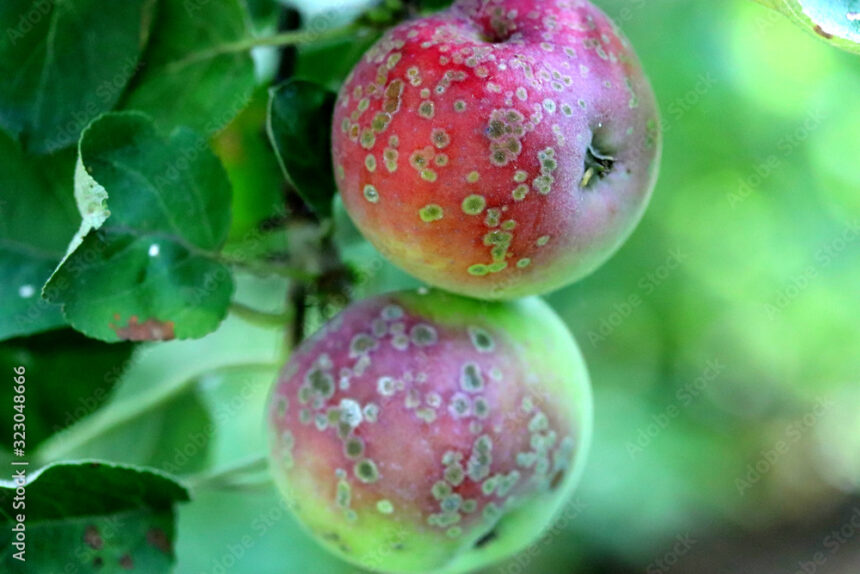Apple scab is a common fungal disease that affects apple trees and can cause significant damage to the fruit. Here are some symptoms of apple scab that you should look out for in apples:
- Scabby Lesions: The most noticeable symptom of apple scab is the development of scabby lesions on the surface of the fruit. These lesions are dark brown or black in color and have a rough or corky texture. They can vary in size and shape, and may merge together as the infection progresses.
- Leaf Spots: Apple scab can also affect the leaves of the apple tree. Look for circular or irregularly shaped brown or olive-green spots on the leaves. These spots may have a velvety appearance and can cause defoliation if the infection is severe.
- Twig and Fruit Cankers: Apple scab can cause cankers, which are localized areas of dead tissue, on twigs and fruit. Cankers appear as sunken, dark brown or black lesions and can affect the overall health and productivity of the tree.
- Deformed or Cracked Fruit: Infected apples may develop deformities or cracks as a result of apple scab. These abnormalities can affect the appearance and marketability of the fruit.
- Premature Fruit Drop: In severe cases of apple scab infection, the affected apples may drop prematurely from the tree. This can result in reduced fruit yield and economic losses for apple growers.
It’s important to note that symptoms of apple scab can vary depending on the apple variety, the severity of the infection, and environmental conditions. If you suspect apple scab in your apple trees, it is recommended to consult with a local agricultural extension office or a professional arborist for accurate diagnosis and appropriate treatment options.
Join 'Farmers Mag' WhatsApp Channel
Get the latest Farming news and tips delivered straight to your WhatsApp
CLICK HERE TO JOIN






